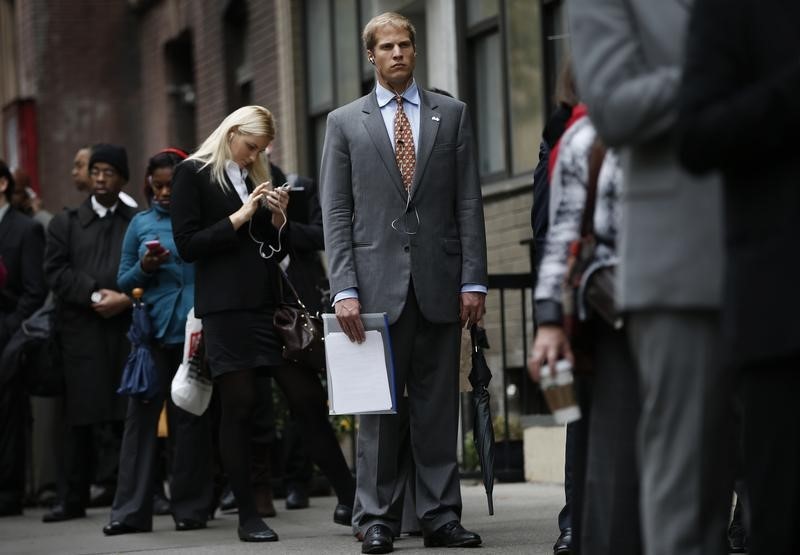Investing.com - Trade took the spotlight back from the Federal Reserve as some encouraging, although vague, comments about progress from Mexico’s trade team visiting Washington helped bring in late-afternoon stock buyers.
Those comments also helped shake oil traders out of their completely bearish funk on Thursday, leading to a rise in crude prices.
But barring an actual concrete delay on President Donald Trump’s threatened tariffs, tomorrow’s premarket activity will be back focusing on rates.
Non-farm payrolls will set the tone for early trading, with a lower-than-expected number likely to help stocks by bolstering the case for a rate cut.
Cooler-than-expected wage growth would also be welcomed by equity bulls.
But whether the Fed cuts or not no longer seems to be the big question if you look at fed funds futures.
The market is pricing in almost a 70% chance rates are a quarter point lower after the FOMC’s July meeting and a more-than-50% chance that rates will be a half point lower following the September meeting, according to Investing.com’s Fed Rate Monitor Tool.
The question now may be whether the Fed goes for a big statement and cuts by 50 basis points.
Right now, the market is pricing in a 15% chance rates will be 100 basis points or more lower by the end of the year. The Fed's key federal funds rate is now 2.25% to 2.5%.
Here are the 3 things that could rock markets tomorrow.
1. It's Jobs Friday!
The Labor Department's non-farm payrolls numbers on Friday will help investors assess the strength of the economy and likely provide the dollar, Treasuries and gold with fresh direction.
Analysts forecast that the U.S. economy created about 185,000 jobs in May, while the unemployment rate is expected to remain steady at 3.6%.
There are some, however, who are expect that the economy created far more jobs in May.
"Total non-farm payrolls are expected to increase by 270,000 in May. The wild card is the number of hires by the Census Bureau, which typically spike in April or May prior to the official census year," said Diane Swonk, chief economist at Grant Thornton.
Wage growth, which the Fed, in its Beige Book report, described as "modest," is expected to rise 0.3% for the month, and 3.2% year on year.
2. U.S. Rig Count Data Eyed
The weekly installment of drilling activity from Baker Hughes on Friday will provide investors with clues on U.S. oil production.
Data last week showed the number of oil rigs operating in the US rose by 3 to 800.
The weekly rig count is an important barometer for the drilling industry and serves as a proxy for oil production and oil services demand.
Crude futures settled 91 cents higher at $52.59 a barrel.
Inventories rose to their highest level since July 2017, according to EIA data on Wednesday, as U.S. oil producers upped output to 12.4 million barrels a day, a record high. The build in inventories arrived despite the start of the summer driving season, which is associated with an uptick in gasoline demand.
"Another ugly week as crude inventories climbed 6.8M bbls ... reaching highest level since July 2017," analysts at Houston-based Tudor Pickering say.
"Concerning to see counter seasonal crude builds continue despite net imports down about 1.4M bpd year/year and refiners out of maintenance mode."
3. Loonie on Watch as Canada Readies Jobs Data
While the U.S. jobs data will take top billing, the release of Canada's employment change data at 8:30 AM ET (12:30 GMT) will also be in focus as it could support the Bank of Canada's expectations that the economy will improve following a recent patch of weakness seen in the fourth quarter of last year and the first quarter of this year.
The Canadian economy is expected to add 8,000 jobs in May after the gain of 106,500 in April, with the unemployment rate anticipated at 5.7%, unchanged from a month earlier.
The jobs data will likely also trigger a reaction in USD/CAD. The pair has been well supported thanks largely to a plunge in oil prices and expectations the Bank of Canada will remain patient on rate hikes for some time.
